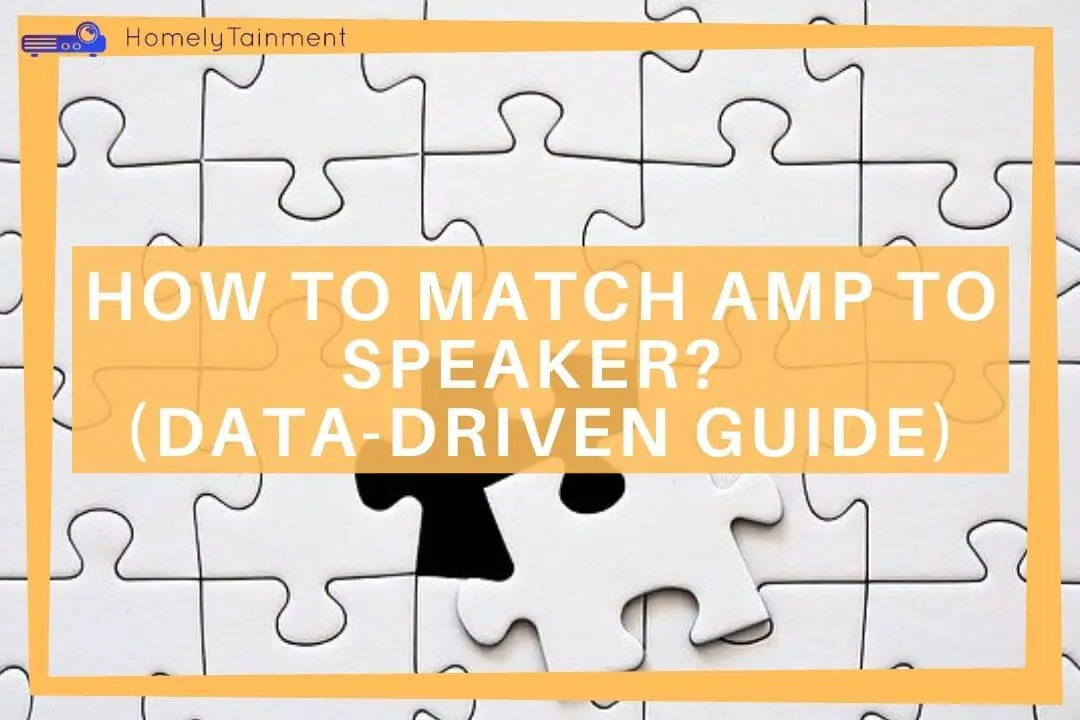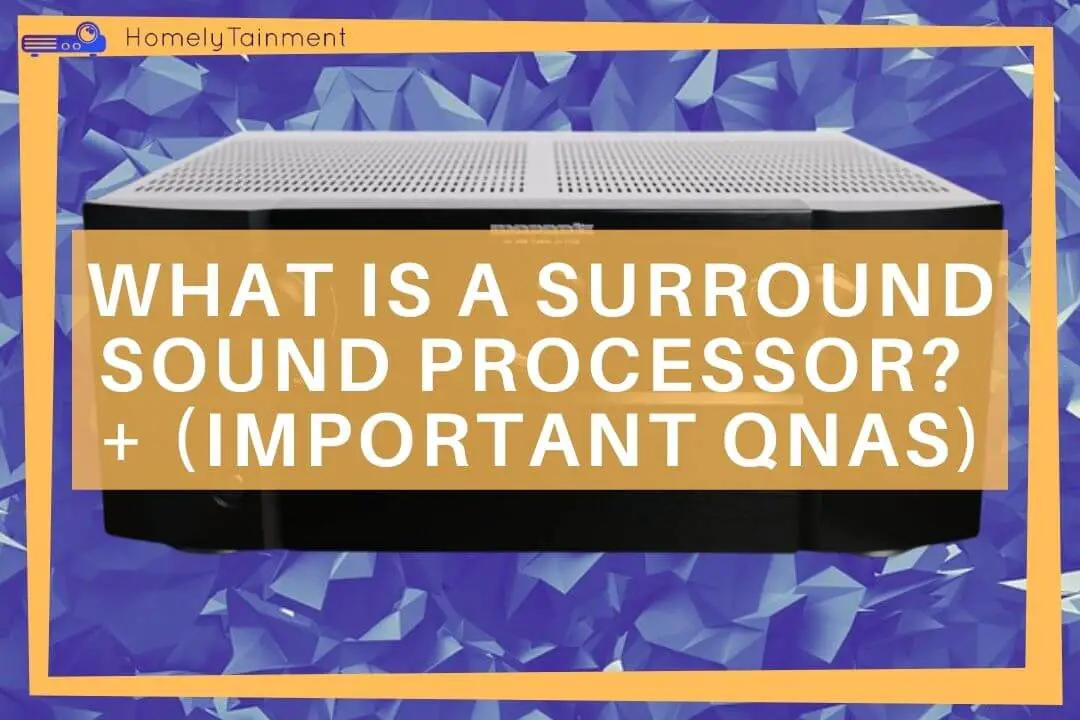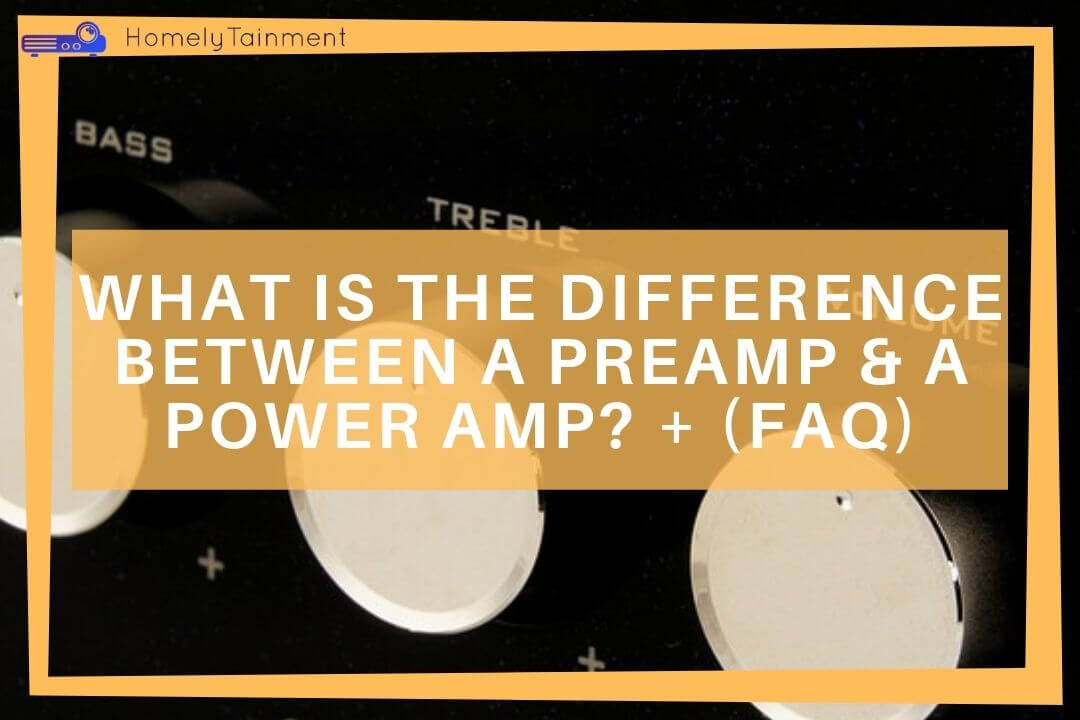
Homelytainment earn commissions (at no additional cost to you) if you purchase products from retailers after clicking on a link from our site.
Well, experts suggest and I too believe that preamp is not an important part of home theater but still its presence brings many significant changes to the sound experience that you have to think twice before considering it the least important part. So, why use a preamp and a power amp?
At A Glance: The reason to use a preamp and power amp is to supply needed power with clean signals without clipping to the speakers.
Keep reading as we will discuss many more aspects and will understand this one aspect in detail. Don’t forget to read the stats of the poll that I have conducted on Facebook Group. You will get an idea of how people are valuing the preamp and power amp combo.
Situation Without Preamp In The Chain

When there is no preamp in the chain of the home theater system. The speakers will not get clean signals to produce sound.
The whole purpose of the preamp is to refine the signals to a voltage level that can be easily processed by a power amp. But if there is no preamp then the power amp will not get clean signals and it will transfer the signals in the same clipped shape to the speakers.
These clipped signals will make the speakers not sound natural, fuller, and deep. But on top of that, they will sound “pop” while playing.
Also, it will be very hard for the speakers to function with these clipped signals. As a result, they will produce more heat than in regular use. They will age faster and will die soon.
When there is no preamp you get sound with flaws and the speaker ages faster.
The signals that will be transferred to the speakers will be flat at the edges above and below.
Read my guide about the best preamp/processor for home theater. You will know many more things about it.
Situation Without Power Amp In The Chain

The power amp comes into play to give needed power to the speakers. Speakers require huge power to run and fulfill their job.
Many speakers that are used in home theaters need power from 50-300 watts. This power can’t be delivered by the preamp. Because a preamp is a voltage amplifier and doesn’t produce power to drive speakers. The preamp only amplifies the signals that can be used by the amplifier.
Well, sometimes AV Receivers can’t be able to deliver enough power to the speakers. In this case, the speakers will work on very little power to run. As a result, they will blow in a month or a few.
Also, they will cut out on high volume. You will have to keep them on 35 or 55 volume and going up then that will result in the speakers cut out.
Also, the bass will not be tight and deeper, the mids will sound unnatural.
When you are not using a power amp then three issues will arise, the sound will not sound good, the speakers will blow, and the sound will cut out on high volume.
Know how to place the speakers for the best sound experience. You will know pro tips about the speakers’ placement.
Situation After Both Of Them Are In The Chain
This awesomeness will happen after adding both the preamp and power amp to the chain.
- The speakers will get enough power to drive their drivers.
- The signals will be clean to process and the speakers will last longer.
- There will be no “pop” sounds like popcorn popping in the sound.
- The speakers will not cut out on high volume. Now, you are free to go up 50 or even 80 volumes.
- The sound will be fuller, natural, clean, and deep.
- The bass will be tighter and deeper than before.
- The whole sound bubble of Dolby Atmos or DTS:X will be immersive and can be felt all over the room
- The speakers will not blow and will run without any issues in the long run.
- There will be a noticeable realism to the sound signature
- There will be many more new tones felt in the same music. The new tones will be missing when there will be no preamp and power amp in the chain.
- Well, finally proud with a smile. You can now proudly show your home theater to friends and family.
Know how to optimize the audio of home theater. You will get awesome sound after applying these tips.
What do you consider the best for optimal home theater experience? (FB Group Poll)
| Poll Options | Poll Stats |
|---|---|
| I will always go with Preamp & Power amp combo | 76.74% |
| AV Receiver is working well for me | 23.26% |
If you believe your vote can make a world better place for home theater enthusiasts then cast your vote in our in-house Free Home Theater Forum. What do you consider the best for optimal home theater experience? Poll was created especially for my blog readers. Don’t forget to explain briefly in the answer section why you voted so others can take wise decisions. Be a change for the world.
FAQs
How do you hook up a preamp to an amp?
Every preamp has a special output option with it for connection with the amp.
These outputs will be single-ended (RCA) or balanced audio (XLR).
You can find these outputs at the back of it.
Just connect the respected output to the respected inputs on the amp.
But remember always buy an XLR output preamp for the XLR amp inputs. Don’t use a converter for XLR to RCA. Because this will not provide the best experience.
How do I connect my preamp to my speakers?
When you are having a stereo preamp and active speakers for your stereo. Then you can connect the active speakers to the Output port of the preamp directly. These outputs will be RCA outputs.
But if you have a surround sound preamp/processor then you can’t connect the speakers directly. You will do it indirectly via a power amp.
Can you plug speakers into a preamp?
You will have to plug in the speakers to the power amp. You can’t connect the speakers directly to the preamp when you are using it for surround sound.
However, you can plug the speakers into a stereo preamp but make sure the speakers are active. Meaning they are self-powered. They have an amplifier built-in.
Is a receiver the same as a preamp?
The receiver is not the same as a preamp. The receiver has the preamp and power amp built-in. The receiver has to deal with the audio and video both but the preamp has to deal with the audio only.
The receiver can be used without an external amplifier while the preamp can’t be used without an external amp.
What is the difference between AVR and an amplifier?
The AV receiver has the preamp and power amp built-in and it has to deal with the audio-video while the amplifier has to deal with the audio only.
However, the Receiver can’t have a huge power that can satisfy huge power-hungry speakers. While a typical amplifier can do that.
A normal receiver provides 75 RMS power per 2 channels while a typical amplifier can provide 200 watts per 3 channels. Because of this main difference: we use a power amp in our home theater.
How do you connect speakers to an amp?
There are output terminals at the back of the amp. These outputs will have red and black buttons at the top and bottom of them. You have to push the button to tuck in the wires of the speakers.
You will get speaker output for each channel that is supported by your amp.
Helpful Resources For The FAQs To Read More
- For more read my this guide about matching preamp and power amp to know more. (Resource for the first answer)
- This was my opinion, read more about it here on TechWalla. (Resource for the fifth answer)
- Know more about this video. (Below Video Resource for the sixth answer)




